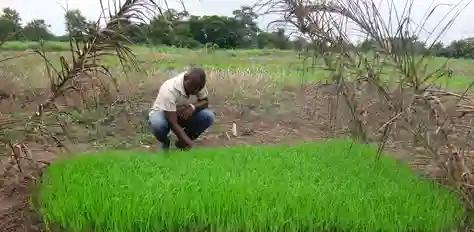The last time we met Laner Fadayomi or LanreRice, and his, Real Foster CAMS Limited, he explained to us the background of his operation. It’s been a decade since he started cultivating rice, but where does this cire come from originally?
Rice is one of the oldest crops in the world. Evidence of rice has been found in the middle and lower Yangzi River Valley region of China, dating from 11 – 12,000 B.C. That is indeed a long time. However, African rice was domesticated roughly 3,000 years ago, in West Africa. The difference between Asian and African rice is mainly that Asian rice comes from Oryza sativa, while African rice comes from Oryza glaberrima.
Although rice has been around as a domestic crop for this long time, there are surprisingly few natural varieties of rice. There are two cultivated and twenty-one wild species of the genus Oryza. At the same time, rice is used as a model organism in biology, and a wide range of modified varieties are available for different purposes, for instance, drought-tolerant rice, salt-tolerant rice, golden rice engineered to contain Vidame A, etc.
Since domestication, rice has played a significant part in human nutrition, and now over 3.5 billion people use rice as their staple food. That is about half of mankind. For this, total world production was 787 million tons in 2021, with China leading the way with 213 million tons, India second with 195 million tons, and Bangladesh third with 57 million tons. African countries produced 23 million tons in 2021, with Nigeria producing over a quarter of it with 8.3 million tons, Egypt with 4.8, Madagascar with 4.4, and Tanzania with 2.7 million tons.
Interestingly, only about 8% of the total world production is being traded internationally, since most of it is consumed locally, within the country of origin.
There are three types of rice when it comes to consumption. That is, rice is classified as short-, medium-, or long-grained rice. An example of short-grained rice is Arborio rice for risotto in Italy. Japanese sushi is made of medium-grained rice since it is slightly sticky and keeps its shape when cooked. And long-grained rice examples are Basmati rice from South Asia, with a nutty flavor, and Jasmine rice from Thailand, with a flowery aroma and soft texture.
“I plant the rice at the beginning of the rainy season, to take advantage of the water. I do not have a borehole, meaning I can only get one harvest per year. With a borehole and irrigation system, my output would triple since I would be able to harvest three times. The crop cycle is from 105 to 150 days, depending on variety, weather, and other factors, but 3 cycles per year are about due able”, LanreRice tells me.
The average rice yield per hectare of land varies from 3 – 6 tons up to 10 to 12 tons in some countries like Australia and Egypt. LanreRice is getting 2-4 tones per hectare, due to the lack of control he has of water. Depending on rainwater does not allow him to maximize the efficiency and the use of the water.
In our next post, I will be asking LanreRice more about his challenges with rice cultivation.







